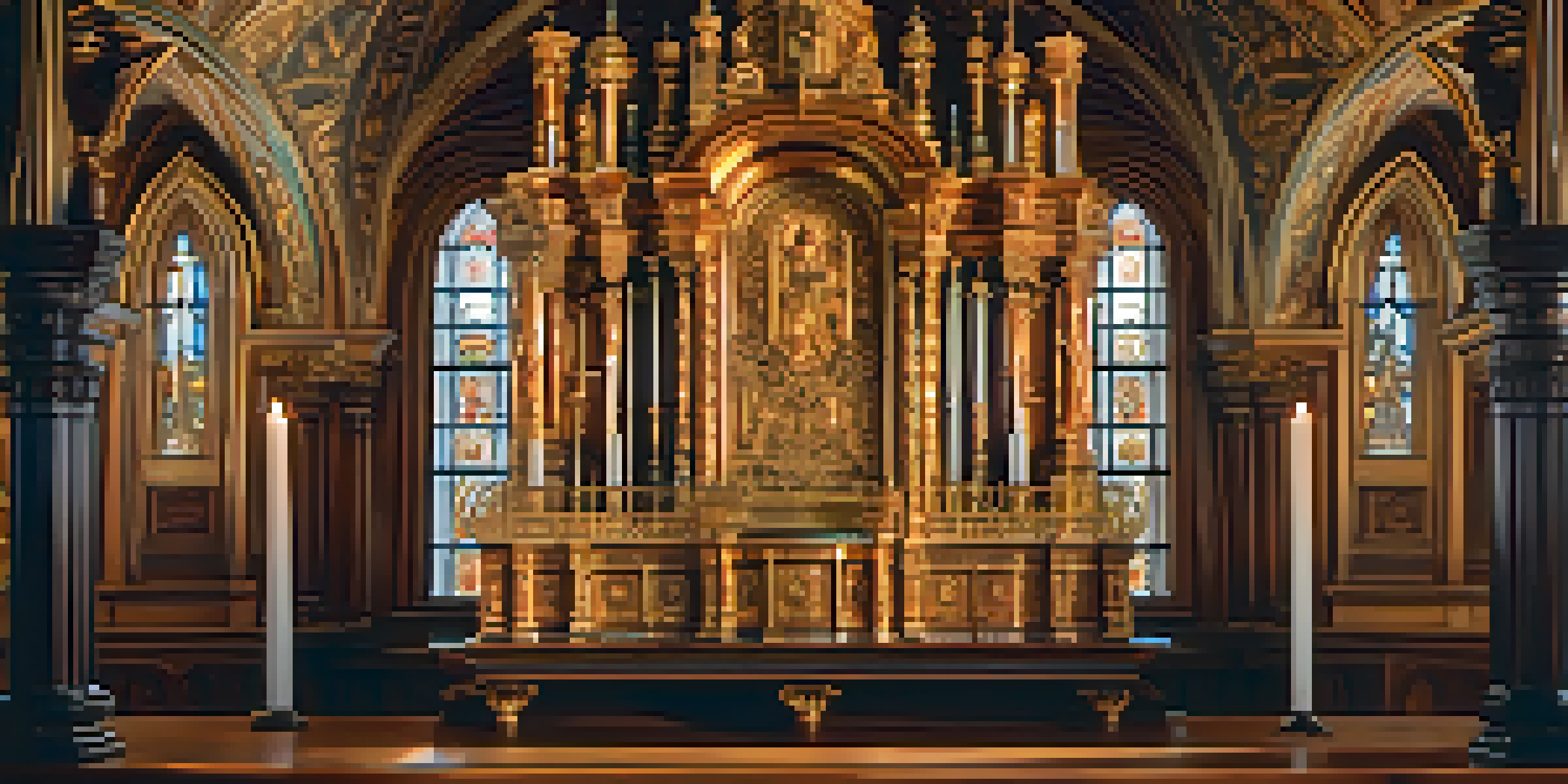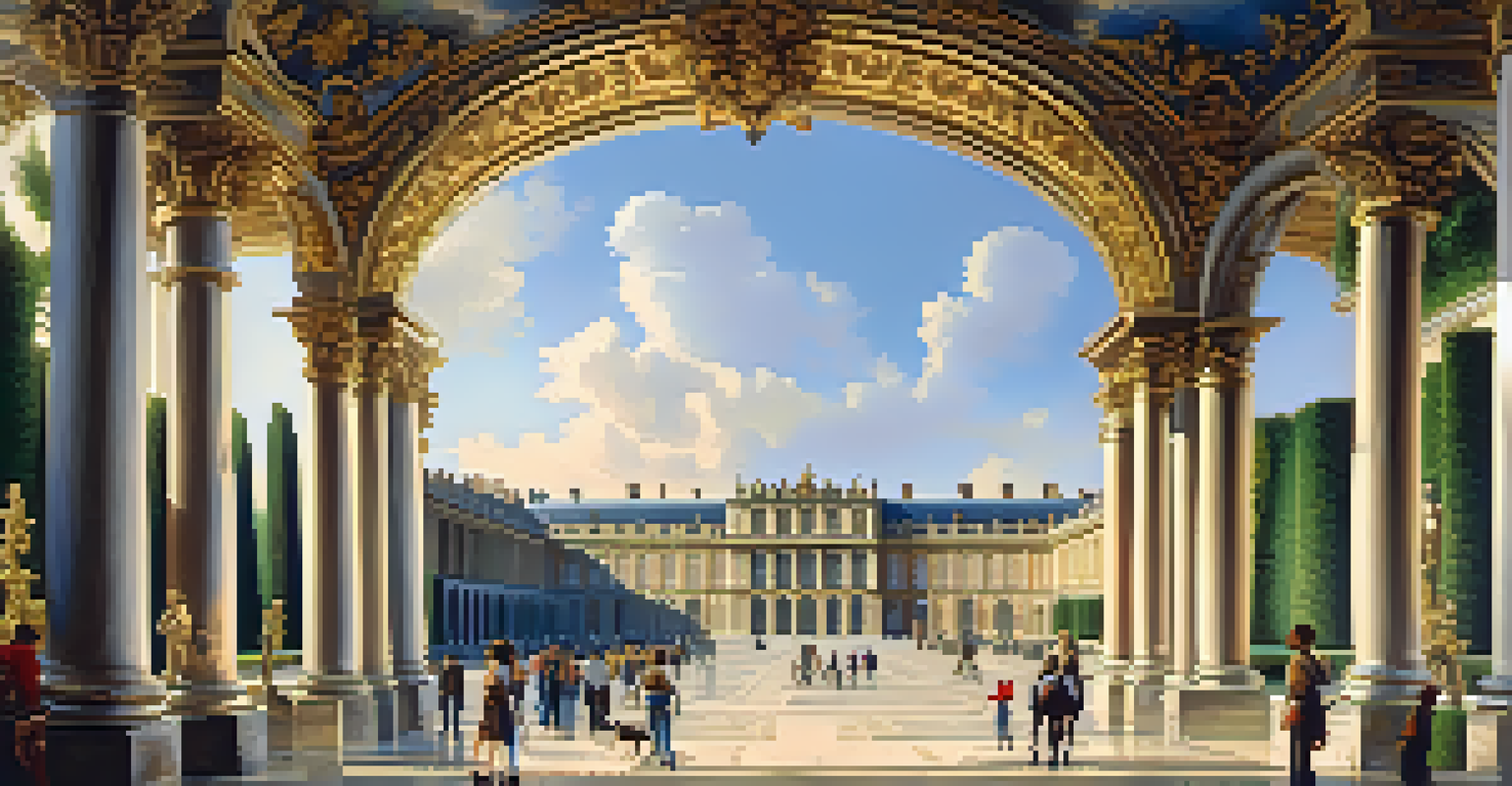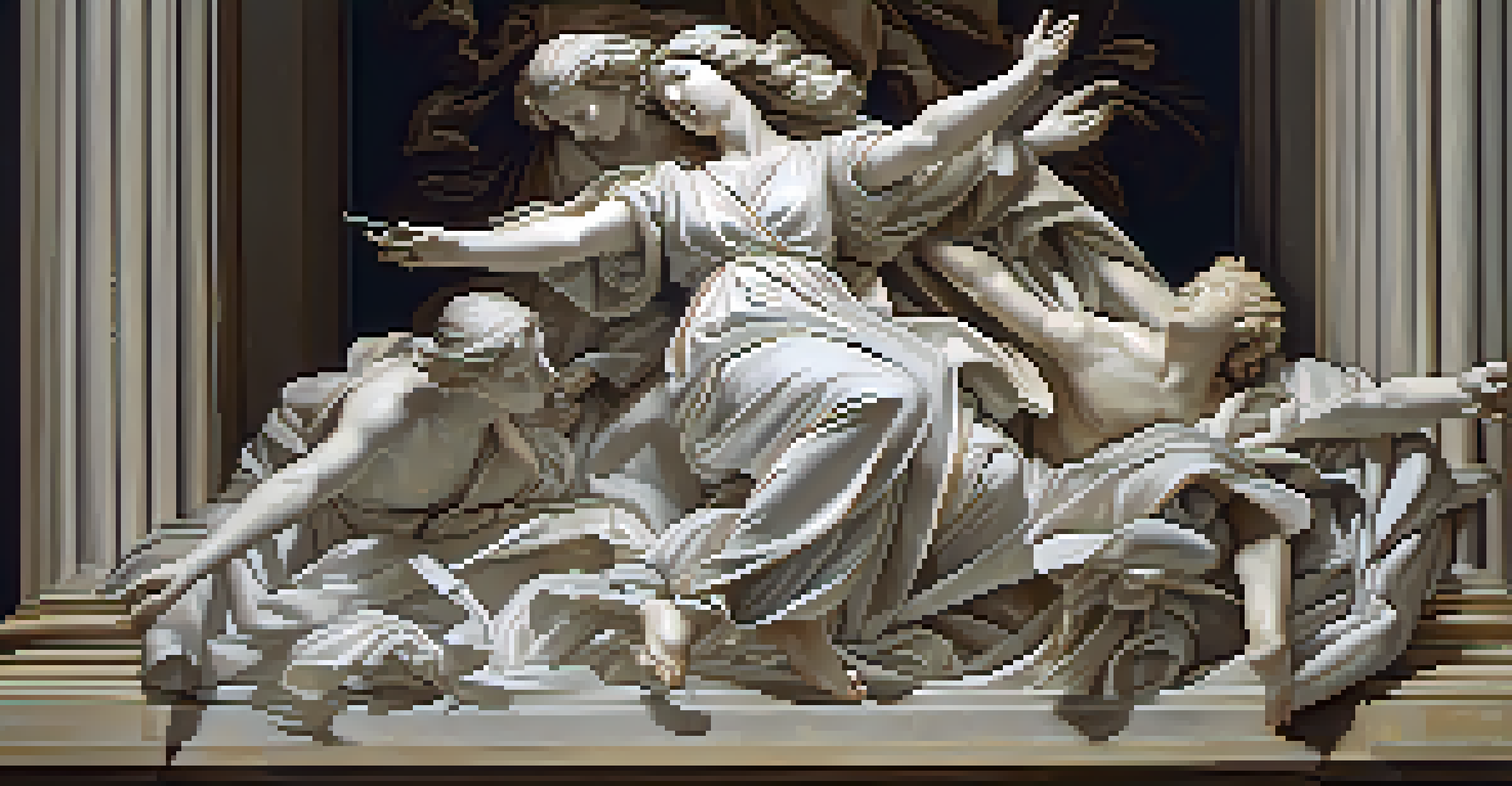Baroque Carving: Opulence and Detail in Historical Context

What is Baroque Carving? An Introduction to the Art
Baroque carving is an artistic style that emerged in the late 16th century, characterized by its intricate details and opulent designs. This form of art was primarily used in architecture, sculpture, and decorative arts, aiming to evoke emotion and grandeur. The Baroque period, flourishing until the early 18th century, sought to impress and overwhelm viewers with its elaborate forms and rich textures.
Art is the most beautiful of all lies.
At its core, Baroque carving emphasizes movement, contrast, and dramatic expressions. Artists utilized curves and swirling patterns to create a sense of dynamism, making the artwork feel alive. This approach was a stark departure from the more restrained and balanced designs of the Renaissance, reflecting a shift towards emotional engagement in art.
The use of materials like wood, ivory, and marble in Baroque carving allowed artisans to explore incredible detail. Each piece tells a story, often rooted in religious themes or historical narratives, captivating audiences with its depth and complexity. Understanding Baroque carving means appreciating not just the artistry but also the cultural context in which it thrived.
Historical Context: The Rise of Baroque Carving
Baroque carving arose during a time of significant political and religious upheaval in Europe. The Catholic Church, seeking to counter the Protestant Reformation, commissioned grand works to inspire awe and devotion. This led to a surge in artistic endeavors, with carving becoming a vital means of communicating spiritual and political messages.

Countries like Italy and Spain became hotbeds of Baroque artistry, where prominent figures like Gian Lorenzo Bernini and Francisco de Zurbarán shaped the movement. Their works reflected the opulence of the time, often incorporating elements that highlighted power, faith, and divine beauty. This intertwining of politics and spirituality gave rise to a unique style that still influences artists today.
Baroque Carving's Emotional Impact
Baroque carving is known for its intricate details and dramatic expressions that evoke strong emotions and grandeur.
As Baroque carving spread across Europe, it began to evolve, assimilating local traditions and materials. In regions like France and Austria, for instance, artists adapted the style to fit their unique cultural narratives. This cross-pollination of ideas enriched Baroque carving, making it a truly pan-European phenomenon.
Techniques: The Craftsmanship Behind Baroque Carving
The craftsmanship involved in Baroque carving is nothing short of extraordinary. Artisans employed techniques such as undercutting and deep relief to create dramatic contrasts and textures. This meticulous attention to detail allows the carvings to play with light and shadow, enhancing their three-dimensionality and visual impact.
Every artist dips his brush in his own soul, and paints his own nature into his pictures.
Wood was a popular medium for Baroque carving, but sculptors also worked with materials like ivory and marble to achieve stunning results. Each material presented unique challenges and required different approaches, showcasing the versatility of Baroque artists. The choice of material often dictated the style and intricacy of the final piece.
Moreover, the tools and methods used during the Baroque period were rudimentary compared to today’s standards. Yet, artisans displayed remarkable skill and ingenuity, often relying on hand tools to achieve intricate designs. This dedication to the craft is evident in the finished works, which continue to captivate audiences centuries later.
Iconic Examples of Baroque Carving
Several iconic examples of Baroque carving highlight the opulence and detail characteristic of the style. One notable piece is the 'Ecstasy of Saint Teresa' by Gian Lorenzo Bernini, which combines sculpture and architecture to create a transcendent experience. The intricate folds of the fabric and the expressive figures draw viewers into a spiritual narrative.
Another stunning example is the ornate altarpiece of the Church of San Lorenzo in Turin, Italy. This piece showcases the elaborate detailing and grandeur typical of Baroque art, with gilded elements and intricate woodwork that demand attention. Such works not only serve a decorative purpose but also convey powerful religious sentiments.
Cultural Context of Baroque Art
The rise of Baroque carving was deeply intertwined with political and religious narratives, particularly during the Counter-Reformation.
These examples illustrate how Baroque carving was not just about aesthetic appeal but also about storytelling and emotional engagement. The artistry captured in these works continues to inspire modern artists and collectors, preserving the legacy of the Baroque period in contemporary culture.
Baroque Carving in Architecture: A Grand Fusion
Baroque carving seamlessly integrates with architecture, creating spaces that are both functional and visually stunning. Buildings from this period often feature elaborate facades adorned with intricate carvings, turning everyday structures into works of art. This architectural style emphasizes grandeur, with flowing designs that invite exploration.
In churches, for example, Baroque carvings serve both decorative and narrative purposes. They often depict biblical scenes or saints, guiding worshippers through spiritual journeys as they navigate the space. The combination of architecture and carving creates an immersive experience, where art and spirituality intertwine.
Prominent examples include the Palace of Versailles in France, where the opulent carvings enhance the overall majesty of the architecture. Such structures demonstrate how Baroque carving transcends mere decoration, becoming an integral part of the architectural narrative and elevating the viewer's experience.
The Influence of Baroque Carving on Modern Art
The legacy of Baroque carving continues to influence artists and designers today. Elements of Baroque style can be seen in various art movements, from Rococo to Neoclassicism, showcasing its lasting impact on the evolution of art. Contemporary artists often draw inspiration from the dramatic forms and emotional depth of Baroque works.
In modern design, Baroque influences can be observed in interior decoration, where ornate details and rich textures create luxurious environments. The principles of contrast, movement, and emotional engagement still resonate, allowing designers to evoke the same feelings of awe that Baroque artists sought to achieve.
Legacy and Modern Influence
Baroque carving's influence persists in contemporary art and design, inspiring modern artists and emphasizing craftsmanship.
Moreover, the appreciation for craftsmanship and detail in Baroque carving has led to a resurgence in artisanal techniques. Many contemporary artisans are returning to traditional methods, emphasizing the importance of skill and craftsmanship in their work. This revival reflects a broader cultural movement towards valuing authenticity and artistry in a fast-paced, mass-produced world.
Preserving Baroque Carving: Challenges and Efforts
Preserving Baroque carving poses unique challenges, given the delicate nature of the materials and the passage of time. Many historical pieces have suffered from neglect, environmental conditions, and improper restoration techniques. As a result, efforts to conserve these works are crucial for future generations to appreciate their beauty and significance.
Conservationists employ specialized techniques to restore and preserve Baroque carvings, often using minimal intervention to maintain original integrity. This process requires a deep understanding of both the art and the historical context, ensuring that restorations are respectful of the artists' intentions. Collaboration among historians, artists, and scientists is vital for successful preservation efforts.

Public awareness and appreciation of Baroque carving also play a significant role in preservation. Exhibitions, educational programs, and community initiatives can foster a greater understanding of this art form, encouraging support for conservation efforts. By recognizing the value of Baroque carving, we can ensure that these remarkable works continue to inspire awe for generations to come.